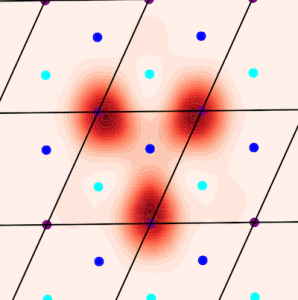Z. A. H. Goodwin, F. Corsetti, A. A. Mostofi and J. Lischner, Twist-angle dependence of electron correlations in moiré graphene bilayers, Phys. Rev. B 100, 121106(R) (2019)
Since its experimental discovery and characterisation in 2018, the physics of magic-angle twisted bilayer graphene (tBLG) has captured the imagination of the condensed matter community and has proved to be a highly tunable platform for studying the behaviour of correlated electrons. Motivated by the theoretical prediction of magic twist angles at which the electron kinetic energy becomes small, experiments observed correlated insulator and unconventional superconducting phases in magic-angle tBLG. These findings have triggered an intense theoretical effort to study the electronic structure of tBLG and understand the microscopic mechanisms that give rise to the observed strong correlation phenomena.
In a paper that appears as a Rapid Communication in Physical Review B, we have taken essential steps towards understanding the electronic structure of tBLG by determining how electron correlations depend on twist-angle. We demonstrate that strong electron correlations are present over a range of twist-angles around the magic angle and that there is a strong influence from screening by the semiconducting substrate and metallic gates encapsulating tBLG. We calculate both on-site and extended Hubbard parameters and show that they exhibit universal behaviour upon rescaling and that long-ranged interactions significantly reduce electron correlations (even in the presence of metallic screening from the gates).
This work was part of Zachary Goodwin’s PhD in the Centre for Doctoral Training in Theory and Simulation of Materials. Zachary is supervised by Johannes Lischner and Arash Mostofi.
